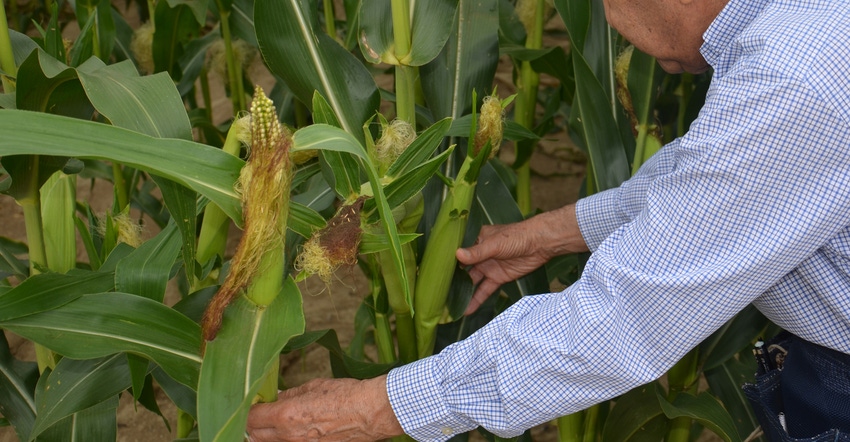
The No. 1 rule every good corn grower must understand is that each corn plant has one mission in life. It’s not making the farmer money by producing more yield. It’s producing as many viable kernels as possible. If that means you get more yield and more profit too, then it’s a win-win situation.
“The corn plant wants to make as many babies as it can,” says Dave Nanda, a former plant breeder who’s now an independent crop consultant based in Indianapolis. He visits the Corn Watch ’18 field every two weeks during the season. Corn Watch ’18 is sponsored by Seed Genetics-Direct, Washington Court House, Ohio.
The corn plant decides early in the season to do whatever it can to make as many babies as possible, especially given adequate space, without neighbors too close, Nanda says. On the other hand, if a plant has close neighbors, and it gets hot and dry late in the growing season, the plant may abort tip kernels and concentrate on filling the rest of the kernels. The plant wants the kernels to be able to grow and reproduce.
4 ways
On a recent visit, Nanda discovered a plant on the outside edge of the Corn Watch ’18 field that was trying to produce as many progeny as it could in four different ways, taking advantage of a lack of competition.
1. Produce a large, normal ear on the primary node. The first thing almost any corn plant does is send out a shoot at the uppermost node that can produce silks. In this case, the shoot silked in time to attract plenty of pollen and produce a well-fertilized ear.
2. Send out a sucker ear from the same node as the main ear. This phenomenon showed up in areas a couple of years ago and is showing up in central and southeastern Indiana this year. Basically, the plant tries to send out a second shoot at the same node where the primary node formed the main ear.
“We would rather not see it, and it’s not something a plant breeder would select for,” Nanda says. “But on the other hand, it really doesn’t hurt anything in most cases. The sucker ear usually emerges with silks later, after most of the pollen is gone. It may have a few kernels if a few silks are fertilized before all the pollen is gone.”
3. Add a second ear at the node before the main ear. Many plants will try to put on a second ear when conditions are favorable and room is plentiful, Nanda says. It’s typically a smaller ear, but it can produce a reasonable number of kernels if pollination is successful.
4. Add an ear on top. “It’s like the plant says, ‘What the heck, it’s late, but I might snag some pollen yet if I throw an ear on the top of this sucker plant instead of a tassel,’” Nanda says. Whether that ear forms harvestable kernels depends upon if there is still pollen available, and if birds and insects leave it alone.
“Plants like this one remind me just how strong a plant’s drive is to produce as many progeny as possible,” Nanda says.
About the Author(s)
You May Also Like




